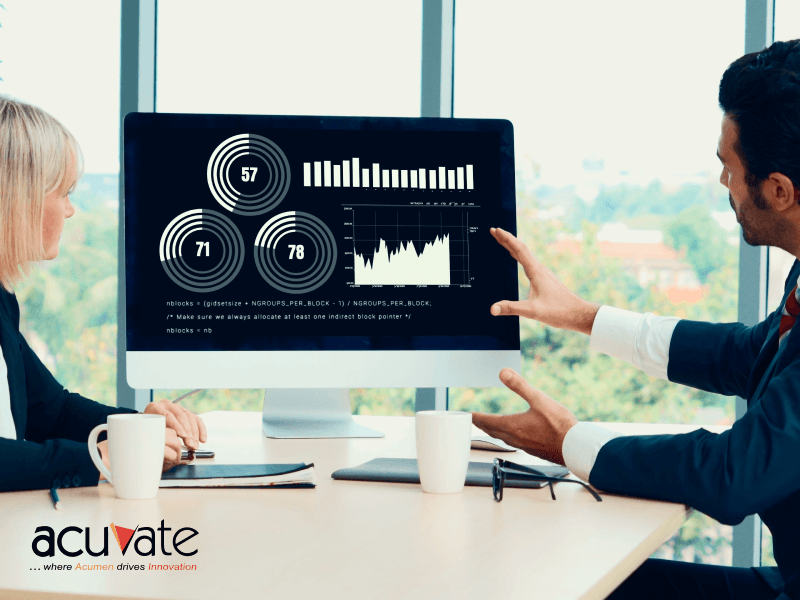The world is facing a pressing crisis in terms of a rapidly expanding population, depleting resources, growing carbon emissions, and rising temperatures. With our planet on a path to a 2.7 degree-celsius temperature rise by the end of this century, there is an immediate need to tackle the climate crisis, reduce global warming, and progress toward achieving zero-waste sustainability goals.
A significant step in this journey has been taken at a recently concluded COP26 summit, where various governments have pledged to reduce emissions by 2030.
When looking at industries contributing to these harmful emissions, a recent study found that transportation accounted for a staggering (29%) of total U.S. GHG emissions. Consequently, in response to the need for future-oriented laws and robust transport infrastructure to ensure a cleaner and safer environment, several state and local governments are beginning to reimagine how city transportation works.
To push green initiatives and make the planet cleaner, safer, and more sustainable. The European Commission’s Communication on a European Green Deal sets out the objective of achieving climate neutrality by 2050, which will require a reduction in transport emissions.
In this regard, technological innovations and the rapid growth of digitalization are driving a significant evolution in the transportation sector. Smart and sustainable transportation has become the need of the hour. Governments must revamp how they plan and maintain critical infrastructures like roads and bridges while also incorporating smart technology solutions like Artificial Intelligence (AI), the Internet of Things (IoT), and Big Data Analytics to drive sustainability in transportation, enhance civic experiences and urban innovations, and build smarter cities that usher in the zero-waste global climate agenda.
One can say that AI has spearheaded the technological revolution in transportation, with the global artificial intelligence (AI) in the transportation market is expected to reach USD 3.75 billion in 2024 and 12.13 billion by 2032, growing at a CAGR of 15.80% during the forecast period.
Let’s explore further how green, smart, and sustainable transportation solutions are reducing the carbon footprint in urban city transportation.
6 Progressive Ways to Drive Sustainability in Transportation
Intelligent technology solutions like machine learning, deep learning, AI, and IoT have shaped smart cities, driving innovation and sustainability in transportation to lessen air and noise pollution, reduce traffic congestion, and increase passenger safety. Such technologies monitor traffic density, dwelling vehicles, traffic flow, traffic incidents, and much more to overcome the pain points of urban traffic management and build smart and sustainable cities.
We shall discuss all of this below.
1. Reducing noise pollution with AI solutions that prevent vehicle muffler tampering
Vehicle owners often illegally tamper with their vehicle mufflers, creating noise over permitted city levels that leads to excess noise pollution. Over the years, several vehicles have been found with modified mufflers that spoil citizen peace and create a hazardous city environment. Out of the 40 million cases of hearing loss in America, 10 million are noise-related.
To keep a check on violators, law enforcers and citizens alike have been manually taking videos to submit to appropriate authorities, verifying incidents against vehicle numbers and vehicle types, and presenting appropriate violation videos as evidence of default in court for the imposition of hefty fines.
However, with the rapid increase in urban traffic, recording, maintaining, and finding such proofs of violation have become challenging, resulting in several cases of vehicle muffler tampering going unnoticed. In light of this, several state and local government departments have been seeking smart AI and IoT-based city infrastructure and sustainability solutions to identify vehicles that have modified mufflers.
A quick example here would be our vehicle muffler identification solution. Acuvate helped the government department of a large city metropolis install cameras (with mics) that leverage AI in specific locations. Such cameras identified over 200 incidents per week, 15% of which turned out to be violations that emit noise over a permitted level
With an advanced machine learning model trained on existing muffler violation videos, our solution is able to identify similar violations and match vehicle type and license number.
Further, the solution can display vehicle plate information with confidence scores, view verified and captured incident stats, and search its intuitive admin portal for videos based on license plate data.
2. Effective traffic flow analysis to reduce congestion
Traffic congestion and traffic jams not only cause unnecessary stress, but they also impact road safety, increase the amount of air and noise emissions, and deplete a city’s oil and petrol reserves.
As discussed above, the European Commission’s Communication on a European Green Deal sets out the objective of achieving climate neutrality by 2050, which will require a reduction in transport emissions. A more critical and pressing statistic is that according to the National Highway Traffic Safety Administration, vehicles contribute a staggering 29% to the US greenhouse gas emissions.
AI, specifically smart technology solutions like machine learning, IoT, and computer vision using drone and camera-based monitoring, can analyze traffic density, evaluate vehicle count with complete accuracy, spot traffic incidents, analyze bottlenecks and choked points, pinpoint damaged roads, and measure congestion over a period of time.
This helps design more efficient routes and traffic management systems, conduct critical infrastructure (roads and bridges) maintenance and repairs where needed, and reduce urban traffic and congestion.
For more information on how innovation and sustainability in transportation are transforming traffic management, explore our Smart and Sustainable Solution for Vehicle Classification and Traffic Monitoring.
3. Reducing air pollution with smart technology solutions that detect vehicle idling
Often, vehicles are found idling on street corners; their engines are turned on even in resting mode for more than the permitted three minutes. Such idling vehicles are responsible for causing excessive air and noise pollution.
According to the US Department of Energy, idling from heavy and light duty vehicles combined wastes 6 billion gallons of fuel annually. In fact, idling can use up to 2 liters of fuel per hour, emitting over 5.26kg of CO2. Engine idling results in elevated levels of particulate matter (PM) in the air, and as such measures that encourage a reduction in idling are now a major focus for Transport for London, with the London Low Emission Zone (LEZ) having been implemented to reduce emissions.
Eliminating idling for fuel economy and emission reduction will be equivalent to taking 5 million vehicles off the road.
For every such case reported by a citizen, locals and state governments generally impose a penalty of $100-2000. Citizens who report such incidents are rewarded with 30% of the amount. However, viewing and verifying each violation video uploaded on the government department’s website is a tedious, time-consuming task for officials, and therefore, much is needed on the technological front to rectify the vehicle idling problem.
As a quick example of a smart and sustainable transportation solution to counter vehicle idling, we at Acuvate have developed an intelligent AI and IoT solution that captures the vibration in idling vehicles. The solution also ingests the license plate number from such videos, examines the noise of the vehicles for three minutes, identifies vehicle type, and helps inspectors quickly issue citations.
The solution also uses voice-to-text conversion technology to record the required information to be sent along with the citation.
4. Make roads safer by monitoring road conditions
Potholes and road cracks are significant road safety hazards. Yet their reporting is significantly dependent on citizen awareness and willingness to inform the department about road conditions.
To overcome this life-threatening concern and accelerate road safety, computer vision in AI can detect potholes and other defects and show exact road damage by collecting images and processing them under automatic crack detection and classification.
In this way, the requisite department can undertake proactive and preventative maintenance by efficiently identifying road damage and potholes, the burden of which no longer lies with the citizens.
5. Maintain highway safety through critical insight into vehicle count and classification
The growing number of vehicles has contributed significantly to infrastructure-related and traffic hazards, in addition to adding to the already mounting environmental concerns.
To improve surveillance, ensure citizen safety, and meet transportation-related infrastructure goals, it is vital to leverage smart technology solutions and monitor the density and type of traffic on national highways, roads, and bridges.
The need of the hour is new-age vehicle counting and classification solutions for transportation departments that can help enhance traffic surveillance control, improve the road infrastructure, and assist in the effective identification of lost or rogue vehicles, lane violation, and weight payload violation.
In this regard, Acuvate has developed a similar that boasts of the following key features:
- Identification of vehicles violating traffic rules (wrong lane driving, overspeeding, etc.)
- Counting of vehicles moving on both sides of the highway
- Traffic pattern recognition and vehicle classification
- Real-time alerts and notifications about a traffic violation, stark incident, or pattern along with image evidence
6. Modern, paper-free, vehicle pollution inspection solution for improved visibility and productivity and decreased costs
Developing and maintaining records of vehicle pollution violations is traditionally a highly-manual, paper-based process subject not only to errors but also one that takes up a lot of time for the officials in charge. Research shows that US offices utilize over 12.1 trillion sheets of paper in a year.
In this respect, modern-day government departments need a transport inspection app — a single source of truth to access all traffic records, improve team productivity, revolutionize the traditional paper-based manual processes, and move a step forward in achieving the zero-waste sustainability agenda.
A transportation inspection app:
- Helps eliminate manual data entry and digitizes on-field, real-time operating by officers
- Helps inspectors quickly access previous records of violations and resolve issues or take suitable action
- Stores time, GPS location, and incident photos to help regulators quickly validate violation records
- Achievement of sustainability goals through a reduction in carbon footprint (saving up to 75K sheets of paper per year)
Acuvate’s smart Teams Inspection app for the transportation department helps achieve efficiency and sustainability goals by realizing 80% time, 7X paper, and 70% TCO savings.
Final Thoughts!
Indeed, smart technology solutions like AI in transportation are helping build smart and sustainable cities by improving traffic flow, enhancing road safety, reducing air and noise pollution, and increasing efficiency in government operations.
Acuvate is a 2022 Partner of the Year Award Finalist. As a Microsoft Gold Partner, we are empowering governments to deliver digital experiences and build smart, sustainable cities using powerful AI technologies.
Why choose Acuvate?
- Faster time to market: 2 to 10 weeks rollout using pre-built accelerators
- Proven expertise in government operations with successful digital rollouts for large state and local government agencies in New York City
- Optimized costs using existing investments (city cameras, Azure, Office 365, etc.)
To know more, please feel free to schedule a personalized consultation with our experts.




